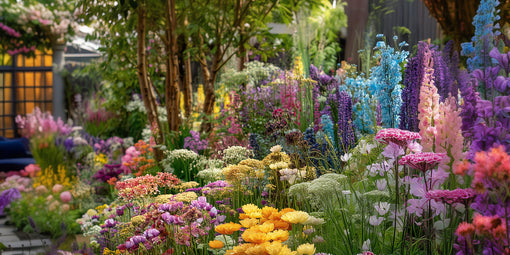Gardening tips for January
We at LOV Flowers are not just flower experts, but we also have a large interest and passion for plants and gardening. Which is why we wanted to share our tip tips on what tasks to start off with in January.
January is the beginning of the gardening year, and after a break of a couple of months, it’s time for a fresh start for your garden - and time to plan for the twelve months ahead with renewed energy and enthusiasm. Although some bulbs need to be planted in autumn, most flowers and shrubs are best planted in early spring.
The majority of gardening work this month is mostly about keeping things trim and tidy, and getting things ready for the year to come. However in this post, we’ll take you through a few of the things you can sow and grow this month! Scroll down for your January gardening tips.
Main gardening tasks
- Deep clean pots, tools, greenhouses and water butts in preparation for spring. This is a tedious but very important task which will set you up for a great growing season.
- Now is the time to order seeds and plants, and plan out what you want your garden or patio to look like this summer!
- Make sure that the protection you have had for your plants over the winter months is still working, as they might have been damaged during bad weather.
Flower garden
Your flower garden needs a little bit of extra care at the beginning of the year after its been asleep for the past months. Complete the following tasks to make sure your garden gets the best
- January is the perfect time to prune your rose bushes, as roses are still dormant at this time. Cut back just above the buds and remove any dead branches.
- Trim the damaged and the oldest willow stems, and thin out overcrowded stems.
- Prune your wisteria.
- Cut down the old stems of perennial plants such as sedum.
- Check on your Dahlia tubers in storage, and remove any that are diseased.
- Clip the old foliage from ornamental grasses before their new growth begins.
- Remove any faded flowers from your winter pansies to stop them setting seed.
- Plant Amaryllis bulbs in pots now, for spectacular indoor flowers in early spring.
Florist tips:
Try to avoid walking on your lawn whenever it’s covered in heavy frost or snow, as this will damage the grass beneath.
Other tasks
Other than the gardening tasks previously mentioned, there are also the following things that need doing:
- Make sure that your indoor plants are hydrated. Because of central heating, the air in your home might be a bit dryer in the winter - and for this reason, we suggest that you mist your plants regularly to increase the humidity.
- Shred your Christmas tree and add it to compost bins.
- Brush heavy snow off hedges and conifers to prevent the branches from snapping off under its weight.
- Feed the birds.





